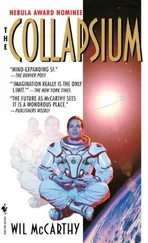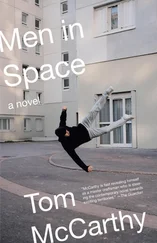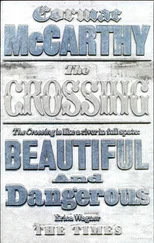“I’ll see what I can learn,” Naz said.
He called back an hour later. Someone had indeed been shot. Details were vague, but it seemed to be drugs-related. It had happened outside Movement Cars. A black man in his thirties. He’d been on a bicycle, and two more black men had pulled up in a car and shot him. He’d died on the spot. Did I want to know more?
“Do you know more?” I asked Naz.
“Not yet,” he said. “But I can keep up to date on information as it comes out. Would you like that?”
I pictured the black man dying beside his bicycle outside the phone box I’d called Daubenay from the day the Settlement came through. I pictured the two other black men shooting him from their car. Had they stayed inside their car? I didn’t know. I remembered a man wheeling a coke machine into the cab office as the box’s display counted down the seconds. Movement Cars. Airports, Stations, Light, Removals.
“Hello?” Naz’s voice broke in.
“Yes,” I told him. “Keep me up to date. And Naz?”
“Yes?”
“I’d like you to procure the area once the police are done with it.”
“Procure it?” he repeated.
“Hire it. Obtain permission to use it.”
“What for?” Naz asked.
“A re-enactment,” I said.
FORENSIC PROCEDURE is an art form, nothing less. No, I’ll go further: it’s higher, more refined, than any art form. Why? Because it’s real. Take just one aspect of it-say the diagrams: with all their outlines, arrows and shaded blocks they look like abstract paintings, avant-garde ones from the last century-dances of shapes and flows as delicate and skilful as the markings on butterflies’ wings. But they’re not abstract at all. They’re records of atrocities. Each line, each figure, every angle-the ink itself vibrates with an almost intolerable violence, darkly screaming from the silence of white paper: something has happened here, someone has died.
“It’s just like cricket,” I told Naz one day.
“In what sense?” he asked.
“Each time the ball’s been past,” I said, “and the white lines are still zinging where it hit, and the seam’s left a mark, and…”
“I don’t follow,” he said.
“It…well, it just is,” I told him. “Each ball is like a crime, a murder. And then they do it again, and again and again, and the commentator has to commentate, or he’ll die too.”
“He’ll die?” Naz asked. “Why?”
“He…whatever,” I said. “I’ve got to get out here.”
We were in a taxi going past King’s Cross. Naz was on his way to meet someone who knew a policeman working in forensics. I was going to the British Library to read about forensic procedure. I’d done this for days now, while I waited for Naz to lay the ground for the re-enactment of this black man’s death. I think I’d have gone mad otherwise, so strong was my compulsion to re-enact it. We couldn’t re-enact it properly until we’d got our hands on the report about it-the report written by the police forensic team who were dealing with the case. Naz trawled through all the contacts in his database to try to find a way of getting access to this and, while he did, I staved off my hunger for it by devouring every book about forensics I could find.
I read textbooks for students, general introductions meant for members of the public, papers delivered by experts at top-level conferences. I read the handbook every professional forensic investigator in the country has to learn by rote, and learnt it by rote too. It was laid out in paragraphs headed by numbers, then by capital letters, then by roman numerals, then by lower-case letters as they indented further and further from the left-hand margin. Each indentation corresponded to a step or half-step in the chain of actions you must follow when you conduct a forensic search. The whole process is extremely formal: you don’t just go ahead and do it-you do it slowly, breaking down your movements into phases that have sections and sub-sections, each one governed by rigorous rules. You even wear special suits when you do it, like Japanese people wearing kimonos as they perform the tea ceremony.
Patterns are important. You move through the crime area in a particular pattern that the head investigator chooses in advance. It could be that he tells you to move forward in straight lanes, like competition swimmers. Or he might cut up the area by laying a grid across it and assigning each investigator one of the grid’s zones. Or he might order a spiral search. Me, if I were a head investigator, I’d plump for a figure of eight, and have each of my people crawl round the same area in an endlessly repeating circuit, unearthing the same evidence, the same prints, marks and tracings again and again and again, recording them as though afresh each time.
Patterns are everywhere in forensic investigations. Investigators have to find and recognize the imprints made by, for example, trainers, fingers and tyres. So with tyres you get ribbed patterns, with two pairs of jagged lines; you get aggressive ribbed ones-the same as ribbed but with prongs sticking from the corners of the lines; then you get cross bar-hexagonal blocks with inverted vs in them (my Fiesta’s tyres were cross bar); directional-a brick pattern, like two adjoining walls seen from a corner; block-same as directional but all cubistic-and curvilineal, which show a gridded net bending and twisting out of shape. Trainers leave hundreds of types of pattern. Fingerprints are the most complicated: the variations in the whorls and deltas found in them are infinite-no two are ever the same.
Well, all these patterns have to be recorded. Captured, like I’d captured the mark beneath the motorbike that day. You capture fingerprints by sprinkling powder over them, blowing lightly across this to remove the powder not stuck to the miniature wet ridges that the finger’s touch has left, then pressing tape onto the remaining powder and removing it again: the pattern sticks to it. Shoe and tyre prints are captured by pouring plaster into the mould the rubber promontories have cut in the earth or mud, letting it set and then lifting it away again, turning space hollowed out by action into solid matter. If the prints are made by wet shoes or by tyres on concrete, then you have to sketch. You’re supposed to make constant sketches as a matter of course, in order to record the dimensions of furniture, doors, windows and so on, and the distances between objects and bodies to entrances and exits, just like I had both when I’d first remembered my building and after the re-enactments had begun.
You’re supposed to constantly photograph too, like Annie had when we’d been setting my building up. You have to take four types of photographs: close-ups of individual items of evidence, medium-distance ones to record the relative positions of closely related items, long-distance ones that include a landmark to establish the crime scene’s location and, finally, ones from other observation points-although it strikes me that the third and fourth types are more or less the same. If I were interested in photos, which I’m not, I’d want to take aerial ones too: first from a crane, then from a circling blimp-one high enough to enable the viewer to make out among the crime scene’s larger patterns images and shapes that maverick archaeologists will claim in years to come were put there to guide the spaceships of a master race of aliens down to earth.
Each day, as soon as I got turfed out of the library, I phoned Naz, to see how his efforts were progressing. He’d hooked up with this person on the police force and bribed him a lot of money to make us a copy of the forensic report on this particular shooting.
“So where is it, then?” I asked him after a week.
Читать дальше












